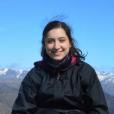Building knowledge of changes in uranium chemistry
A new systematic investigation of the origins of atomic structural distortions in compounds containing uranium has relevance for spent nuclear fuel .

Showing 1561 - 1580 of 1965 results
A new systematic investigation of the origins of atomic structural distortions in compounds containing uranium has relevance for spent nuclear fuel .

ANSTO works in partnerships and collaborative ventures with national and international organisations. Partner with ANSTO.
A world-first processing technology developed in collaboration by ANSTO’s Minerals unit.
The IAEA is providing $1.3m over four years to implement a new, Australian-led patient-care project for the Asia and Pacific region
Just under 250 schools in Australia and one school in Malaysia will participate in a series of science-based competitions during to coincide with National Science Week in 2024.
Indigenous Kakadu plum farmers attend workshop on use and application of the elemental fingerprint technology for indigenous bushfoods provenance.
Resources and a list of user publications associated with Infrared microspectroscopy.
Rare earth elements will be a key area of focus for the Australian Nuclear Science and Technology Organisation’s Minerals unit as it welcomes a $13.9 million funding allocation under the Australian Critical Minerals Research and Development Hub
Peter Kabokov will continue work that will contribute to defence industry


Applications, Recent results, Publications.
From June to August we invited primary schools in Greater Sydney/Illawarra and Melbourne to participate in our 2019 Shorebirds Competition. Students in Years 3 to 6 were asked to create a public awareness poster for a threatened shorebird found in Australia.

Ms. Nevena Kosarac completed her honours thesis under the umbrella of this project at UNSW Sydney in 2021. Ms.
Samples and techniques on the Far Infrared beamline at the Australian Synchrotron.
Environmental scientists at ANSTO will contribute to major Antarctic research project in Antarctica funded by the Australian Research Council.

